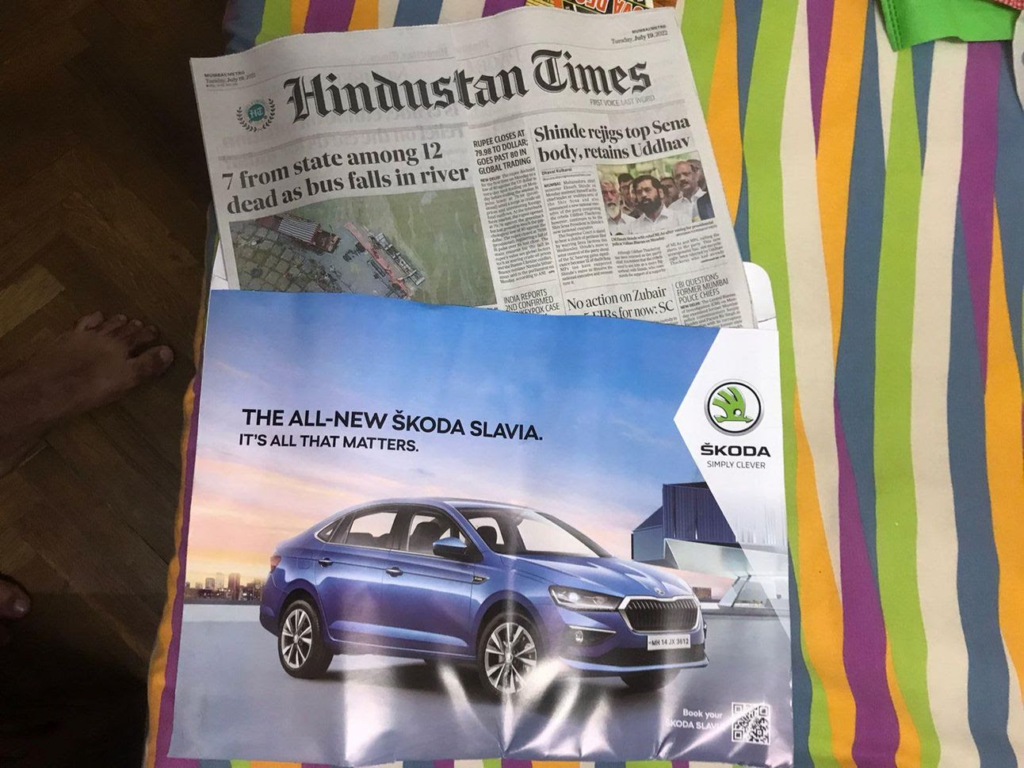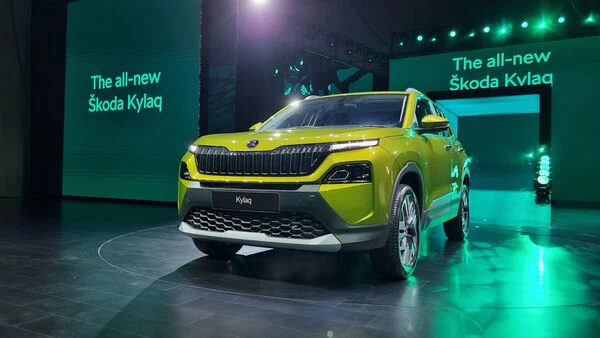Skoda’s journey began in 1895 in the Czech Republic, but it didn’t start as a car manufacturer. Václav Laurin and Václav Klement founded the company with a passion for bicycles, calling it Laurin & Klement. Their ambition and innovative mindset led them to transition into motorcycles, and eventually, cars in 1905.
Fast forward to 1991, Skoda became a part of the Volkswagen Group, which marked a turning point. With Volkswagen’s expertise and global reach, Skoda shifted gears toward becoming a premium brand, focusing on innovation, European craftsmanship, and quality. Today, it’s one of the most recognizable European car brands worldwide.
Skoda expanded aggressively into international markets, including Europe and Asia, establishing itself as a trustworthy brand known for reliability and sophistication. The introduction of models like Octavia, Superb, and Rapid earned the company a loyal customer base and helped it stand out in competitive markets.
The Automotive Landscape
The automotive sector is a competitive battleground, and in India, it’s no different. Some major players dominating the roads include:
Maruti Suzuki with its affordable and fuel-efficient cars.
Hyundai, which focuses on tech-savvy designs and features.
Tata Motors, bringing innovation and a “Made in India” appeal.
Emerging Trends
- EVs (Electric Vehicles):
With sustainability becoming a buzzword, carmakers are racing to launch eco-friendly options.
- Digital-first experiences:
From online car bookings to AR-enabled test drives, brands are heavily investing in digitization.
- Customization and localization:
Customers demand models that suit their unique preferences, pushing brands to adapt.
Usual Marketing Tactics in the Industry
- Mass Media Advertising:Television commercials showcasing cars navigating rugged terrains or cityscapes.Print ads emphasizing fuel efficiency and affordability.
- Showroom-Centric Sales:The traditional model of customers visiting showrooms for car demonstrations.Strong focus on visual appeal and customer service at these centers.
- Sports Sponsorships:Collaborations with cricket tournaments (IPL) or football leagues to enhance visibility.
Market Entry in India
Skoda officially entered the Indian market in 2001, introducing the Octavia, a premium sedan that immediately caught the attention of urban, affluent audiences. Back then, the Indian automotive market was dominated by small, budget-friendly cars like the Maruti 800.
Skoda decided to play in a different league, targeting customers who wanted a premium European car without paying exorbitant prices.
Their strategy revolved around positioning Skoda as a value-for-money premium brand, offering a mix of luxury, performance, and quality engineering that was relatively rare in the Indian market.
The journey wasn’t smooth at the start. Skoda faced significant challenges:
- Price Sensitivity:
Indian buyers are known for being highly price-conscious. Convincing them to spend more, especially on a new brand, is usually tough.
- Domestic Competition:
Brands like Maruti Suzuki and Tata Motors dominated the market with their affordable models and extensive service networks.
Skoda realized they needed to adapt to the Indian market rather than rely on their global playbook. Here’s what worked:
- Localization of Manufacturing:
Skoda set up manufacturing facilities in Aurangabad, Maharashtra, which helped reduce production costs significantly. This allowed them to price their cars more competitively.
- Tailored Models:
The company introduced models like the Rapid and Kushaq, specifically designed to suit Indian roads and preferences.
- Focus on After-Sales Service:
Skoda launched extended warranty programs and improved its service infrastructure to address customer concerns about maintenance costs.
Like most automakers in India, Skoda employed some tried-and-tested strategies to build awareness and trust.

Skoda ran TV and print ads showcasing its cars’ luxury features, appealing to aspirational buyers. The brand actively participated in events like the Auto Expo, using them as platforms to showcase new models and innovations.
STP Analysis
Segmentation
- Demographics:
- Middle to upper-middle-class individuals.
- Urban professionals, entrepreneurs, and families.
- Psychographics:
- Status-conscious buyers who value luxury and performance.
- Customers looking for a balance between affordability and premium quality.
Targeting
Skoda focused on aspirational professionals and families, positioning itself as a brand for those who wanted more than just a car – they wanted an experience. The introduction of SUVs like the Kushaq expanded Skoda’s appeal to younger buyers who prioritize modern designs and tech-savvy features.
Positioning
The brand has successfully positioned itself as an affordable premium option, offering European engineering, superior design, and advanced features at competitive prices.
Marketing Mix of Skoda
Product
Skoda’s product portfolio in India reflects a thoughtful blend of global expertise and local adaptation. Skoda caters to a wide range of customers with SUVs like the Kushaq and Kodiaq, as well as sedans like the Slavia and Superb.
The emphasis is on sleek designs, high safety standards, and advanced technologies like touchscreen infotainment systems, digital cockpits, and driver assistance features. The cars are engineered to handle India’s diverse terrain, making them appealing to urban and semi-urban customers.
Price
Skoda follows a premium pricing strategy but ensures it remains competitive:
By producing vehicles in India, Skoda has reduced costs significantly without compromising on quality. To appeal to budget-conscious buyers, Skoda offers attractive EMI plans, exchange bonuses, and zero-down payment schemes.
The introduction of extended warranties and low-cost maintenance packages adds perceived value for customers concerned about ownership costs. In 2023, Skoda registered 48,755 sales in India! (Source)
Place
Skoda’s distribution strategy ensures accessibility while embracing digital transformation: Skoda has grown its dealership network to Tier 2 and Tier 3 cities, tapping into emerging markets.
Customers can explore cars through virtual showrooms, book test drives online, and even purchase cars digitally. A focus on building service centers and improving spare part availability has boosted trust in the brand.
Promotion
Skoda’s promotional tactics have been a mix of creative, digital, and experiential approaches. Skoda partnered with Chennai Super Kings in a 3-year deal worth $10.2 million (source). This has provided massive visibility for the brand.
In India, the brand also launched its new brand philosophy – ‘Let’s Explore’ – which focuses on innovation and customer experience.
Under this, they launched the ‘Make Every KM Count’ campaign:
One of their most innovative campaigns (and my personal favorite) is this:
They also market themselves as safe for family:
In India, where a lot of the times, cars are bought for shared family experiences, highlighting this is a plus.
But they also have a sports legacy and introduced ‘Live the Thrill’, with the launch of their sports range:
Skoda actively leverages platforms like Instagram, where skodaindia currently has 516K followers. Their content mix mostly includes product showcases, but they also leverage influencer collaborations:

This gives the brand higher visibility, especially among the younger generation who could potentially become customers of Skoda in the near future.
In a Nutshell
By localizing manufacturing, designing models tailored to Indian preferences, and addressing customer concerns with improved after-sales services, Skoda positioned itself as a premium yet accessible brand. Skoda’s emphasis on European engineering and its strategic use of digital innovation demonstrated its commitment to offering value beyond the product.
Key Takeaways from Skoda’s Marketing
- Localize Your Offerings:
Tailor products and services to meet the unique needs and preferences of regional markets.
- Educate Your Customers:
Highlight product advantages and create campaigns that build awareness and trust in your brand.
- Leverage Digital Innovation:
Adopt AR/VR and online booking experiences to enhance customer engagement.
- Focus on After-Sales Service:
Address maintenance concerns with extended warranties and service packages to build long-term loyalty.
- Collaborate Strategically:
Partner with influencers and use experiential marketing to make a memorable impact.


